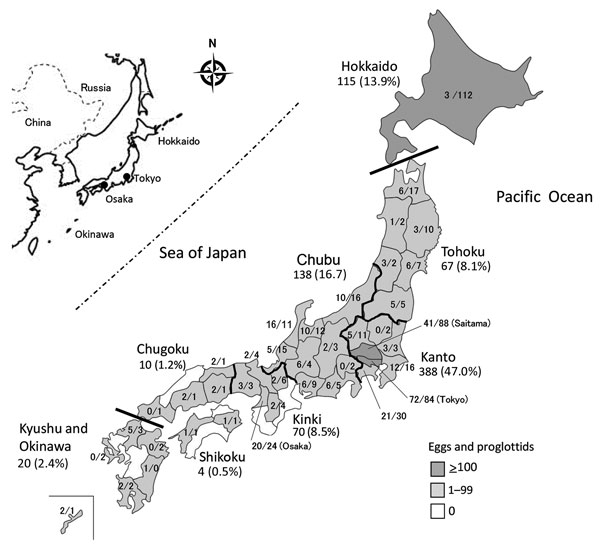Volume 24, Number 8—August 2018
CME ACTIVITY - Synopsis
Epidemiology of Diphyllobothrium nihonkaiense Diphyllobothriasis, Japan, 2001–2016
Figure 4

Figure 4. Geographic distribution of patients infected with Diphyllobothrium nihonkaiense tapeworm, by administrative region, Japan, 2001–2016. Thick lines indicate divisions between the 8 regions of Japan (Hokkaido, Tohoku, Kanto, Chubu, Kinki, Chugoku, Shikoku, and Kyushu and Okinawa). The total numbers of egg and proglottid samples and percentage of D. nihonkaiense infections are given per region. The percentages do not add up to 100% because of rounding. The numbers of egg/proglottid samples are given per prefecture. The prefectures of 13 (1.6%) of 825 patients were unknown; these patients were, therefore, not included. Inset map shows location of Japan in East Asia.
1Retired.
Page created: July 12, 2018
Page updated: July 12, 2018
Page reviewed: July 12, 2018
The conclusions, findings, and opinions expressed by authors contributing to this journal do not necessarily reflect the official position of the U.S. Department of Health and Human Services, the Public Health Service, the Centers for Disease Control and Prevention, or the authors' affiliated institutions. Use of trade names is for identification only and does not imply endorsement by any of the groups named above.